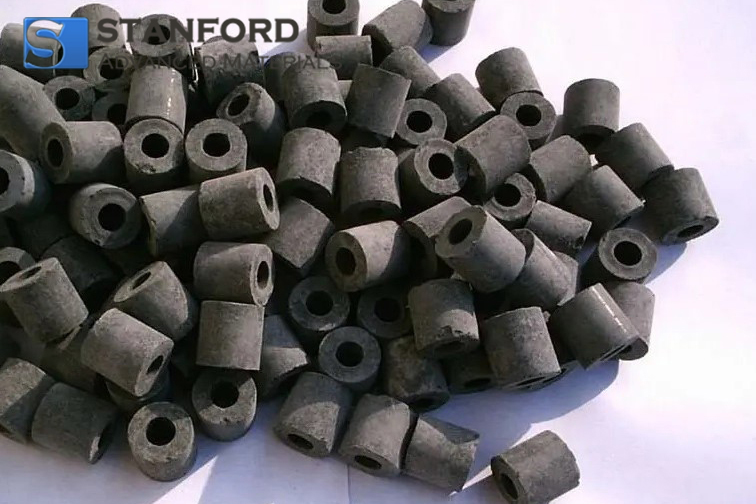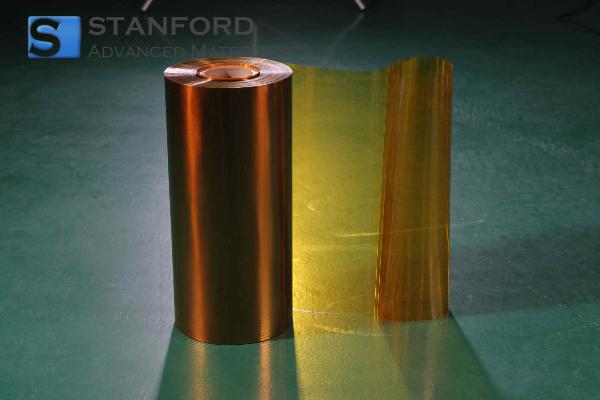Hydrogen: Element Properties And Uses
Description
Hydrogen is an element utilised in various industrial processes. This article provides details on its chemical and physical properties, production methods and applications.
Introduction to the Element
Hydrogen is the most abundant chemical element in the Universe. It is the lightest element, consisting of one proton and one electron. In its natural state, hydrogen is a colourless, odourless and tasteless gas. It is reactive and forms compounds with most elements, such as water (H₂O), hydrocarbons and acids. Hydrogen is employed in multiple chemical processes and is important in energy production. Further information is available at Stanford Advanced Materials (SAM).
Chemical Properties Description
Hydrogen is reactive because it has only one electron in its outer shell. Consequently, it forms bonds with other atoms. This characteristic allows hydrogen to combine with a range of elements to form compounds.
- Bonding: Hydrogen readily forms covalent bonds with elements such as oxygen, nitrogen and carbon.
- Reaction with Oxygen: Hydrogen reacts with oxygen, forming water (H₂O) when ignited.
- Acidic Nature: When combined with certain elements, hydrogen can form acidic solutions, as in the formation of hydrogen chloride (HCl).
- Reducing Agent: Hydrogen acts as a reducing agent in various chemical reduction processes in industry.
Physical Properties Data Table
|
Property |
Value |
|
Atomic Number |
1 |
|
Molar Mass |
2.016 g/mol |
|
State at Room Temperature |
Gas |
|
-252.87°C |
|
|
Melting Point |
-259.16°C |
|
Density |
0.08988 g/L |
|
Solubility |
Low |
|
Flammability |
Easily ignitable |
Common Uses
Hydrogen is utilised in various industrial and research settings. Some common uses of hydrogen are:
- Fuel: Hydrogen is used in fuel cells, where it reacts with oxygen to generate electricity, heat and water.
- Hydrogenation: In the food industry, hydrogen is applied in hydrogenation, particularly in the production of margarine and oils.
- Chemical Synthesis: Hydrogen is employed in the production of ammonia (NH₃) via the Haber process, which is significant for fertiliser manufacture.
- Rocket Propellant: Liquid hydrogen is used as a rocket propellant due to its high energy density.
- Hydrogen Peroxide: It is a component in the manufacture of hydrogen peroxide (H₂O₂), an industrial chemical used for bleaching and disinfection.
Preparation Methods
Hydrogen is primarily produced by various methods, including:
- Electrolysis of Water: An electrical current is passed through water to separate hydrogen from oxygen.
- Steam Methane Reforming: Hydrogen is produced from methane through reaction with steam, yielding hydrogen and carbon monoxide.
- Coal Gasification: Coal is gasified, thereby producing hydrogen as a by-product.
- Biological Methods: Certain microorganisms, such as algae, produce hydrogen through biological processes.
Related Industrial Products
Hydrogen is involved in the manufacture of several industrial products, including:
- Ammonia: Used in fertilisers.
- Methanol: Hydrogen is a primary component in the synthesis of methanol.
- Hydrogenated Oils: Employed in the production of margarine and shortening.
- Hydrogen Peroxide: An industrial chemical used for cleaning, bleaching and disinfection.
- Synthetic Fuels: Hydrogen is used in the production of synthetic fuels derived from coal, natural gas and biomass.
Frequently Asked Questions
What is hydrogen used for in fuel cells?
Hydrogen is used as a fuel in fuel cells to generate electricity, heat and water. In these systems, hydrogen reacts with oxygen under controlled conditions.
How is hydrogen produced?
Hydrogen may be produced by the electrolysis of water, steam methane reforming, coal gasification or biological processes involving algae.
Why is hydrogen reactive?
Hydrogen has one electron in its outer shell, which allows it to form bonds with other atoms. This characteristic renders hydrogen reactive.
Which industrial products are manufactured using hydrogen?
Hydrogen is used in the production of ammonia, methanol, hydrogenated oils, hydrogen peroxide and synthetic fuels.
Is handling hydrogen safe?
Hydrogen is easily ignitable. However, it can be handled safely if appropriate precautions are observed. It should be stored in well-ventilated areas to prevent accidents.

 Bars
Bars
 Beads & Spheres
Beads & Spheres
 Bolts & Nuts
Bolts & Nuts
 Crucibles
Crucibles
 Discs
Discs
 Fibers & Fabrics
Fibers & Fabrics
 Films
Films
 Flake
Flake
 Foams
Foams
 Foil
Foil
 Granules
Granules
 Honeycombs
Honeycombs
 Ink
Ink
 Laminate
Laminate
 Lumps
Lumps
 Meshes
Meshes
 Metallised Film
Metallised Film
 Plate
Plate
 Powders
Powders
 Rod
Rod
 Sheets
Sheets
 Single Crystals
Single Crystals
 Sputtering Target
Sputtering Target
 Tubes
Tubes
 Washer
Washer
 Wires
Wires
 Converters & Calculators
Converters & Calculators
 Write for Us
Write for Us


 Chin Trento
Chin Trento



